
 Tech
Tech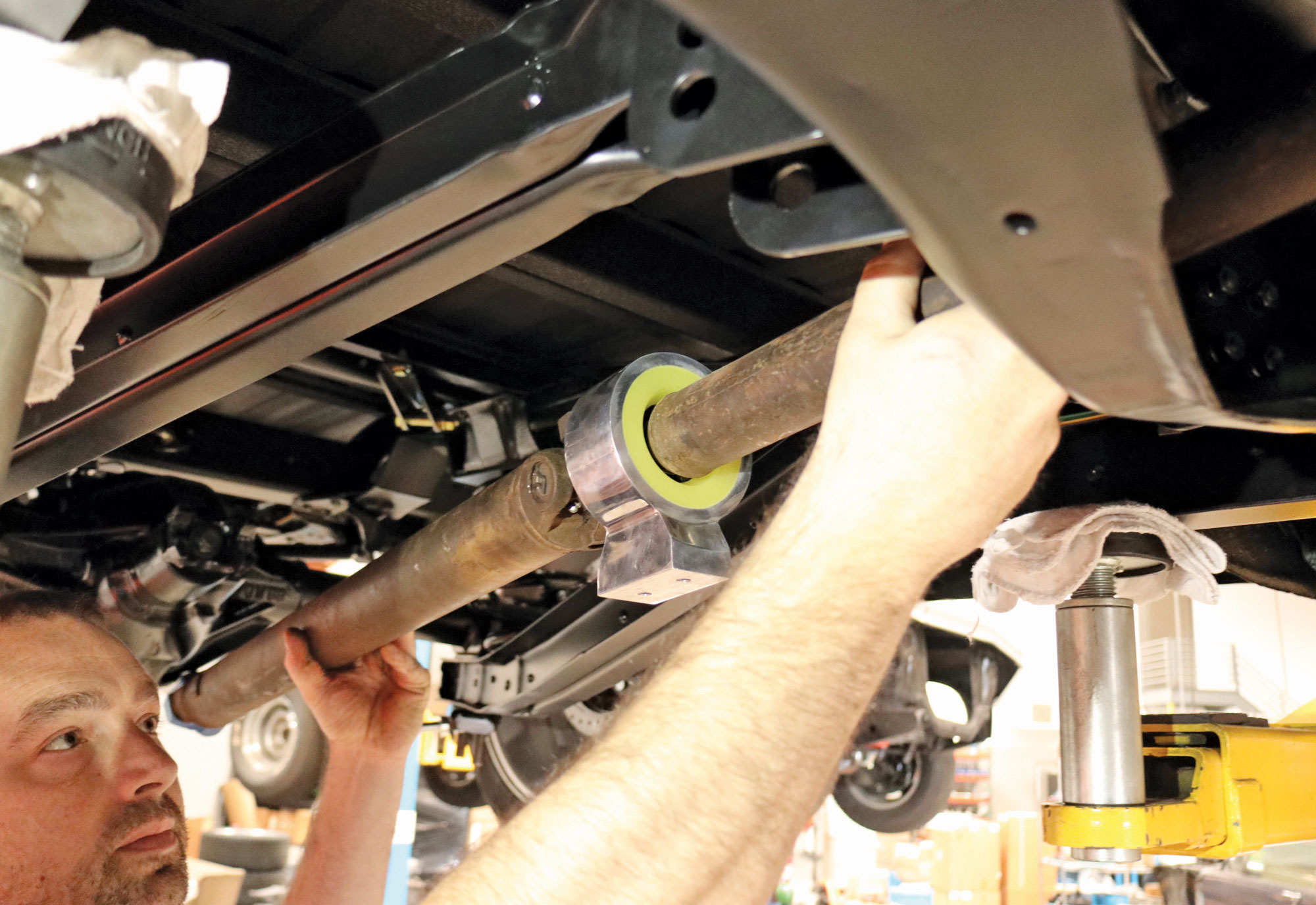
t’s hard to argue the visual benefits gained by lowering a classic truck. Getting that vintage hauler sitting right is one of the most important aspects of any build and can make or break the way the truck looks. But achieving that killer stance isn’t as simple as cutting the coils or installing lowering blocks, if you want things to still function as originally intended. And for the 1963-1972 Chevy C10 trucks equipped with a two-piece driveshaft, the upgrades shouldn’t end with the suspension components. Thankfully, not only does Classic Performance Products (CPP) have all the suspension components to sort out that lowering job, they also carry a full line of driveshaft-related parts necessary to make everything work together cohesively.
Originally, the 1963-1972 C10s equipped with a two-piece driveshaft utilized a carrier bearing encased in rubber to support the driveshaft due to its length and the fact that it had more than two universal joints. When the rear suspension is modified to lower the truck, the resulting change in driveshaft angle puts increased pressure on that rubber carrier bearing, causing premature failure. The solution to this is to upgrade to a carrier bearing encased in polyurethane and set in a billet aluminum housing. This new carrier bearing is much tougher and can better handle the added stress.
Another factor to consider when a two-piece driveshaft-equipped truck is lowered is the fact that the overall length of the second portion of the driveshaft needs to be modified due to the change in the range of motion of the rearend. If you consider that the rearend travels in an arc as it goes through its range of motion, you’ll find that the radius changes as the rearend moves up and down. In a lowered truck, the resulting driveline angles can put additional stress on the carrier bearing and driveshaft. To solve this issue, CPP has developed a Slip Shaft Driveline that replaces the original, fixed-length two-piece driveshaft with one that can adjust between 33.75 and 36.50 inches. Once installed, the Slip Shaft Driveline simply adjusts its length in response to the rearend’s travel, preventing the carrier bearing from becoming bound or stressed, increasing the reliability and life span of the entire driveline system.
Whether your lowered truck project is just getting off the ground or you’ve been fighting driveline issues since slamming that old pickup, chances are CPP carries what you need to get that old hauler sorted out and sitting right.

2. In a one-piece driveline setup, this can usually be overcome by the transmission yoke’s ability to slip in and out of the transmission housing. Due to the two-piece driveshaft’s design, however, this movement is not possible since the two portions of the driveshaft are fixed due to the carrier bearing.
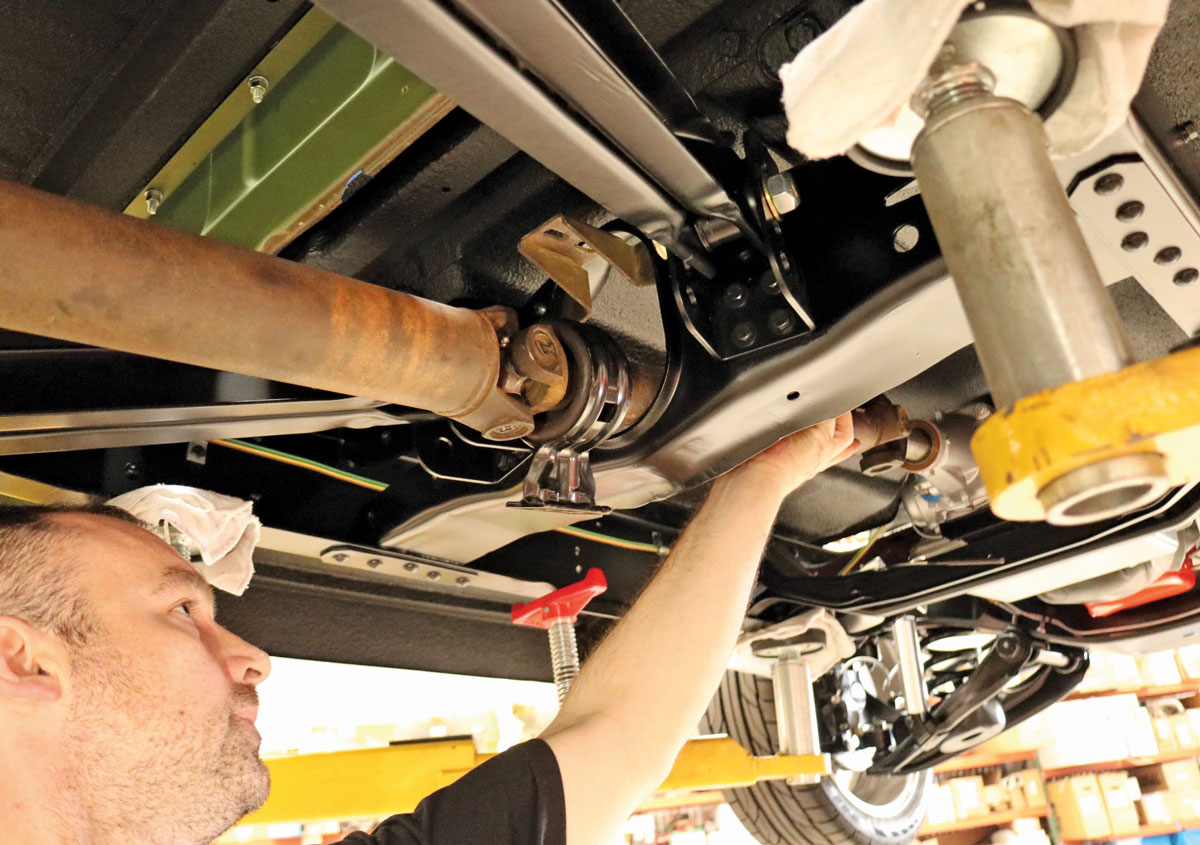
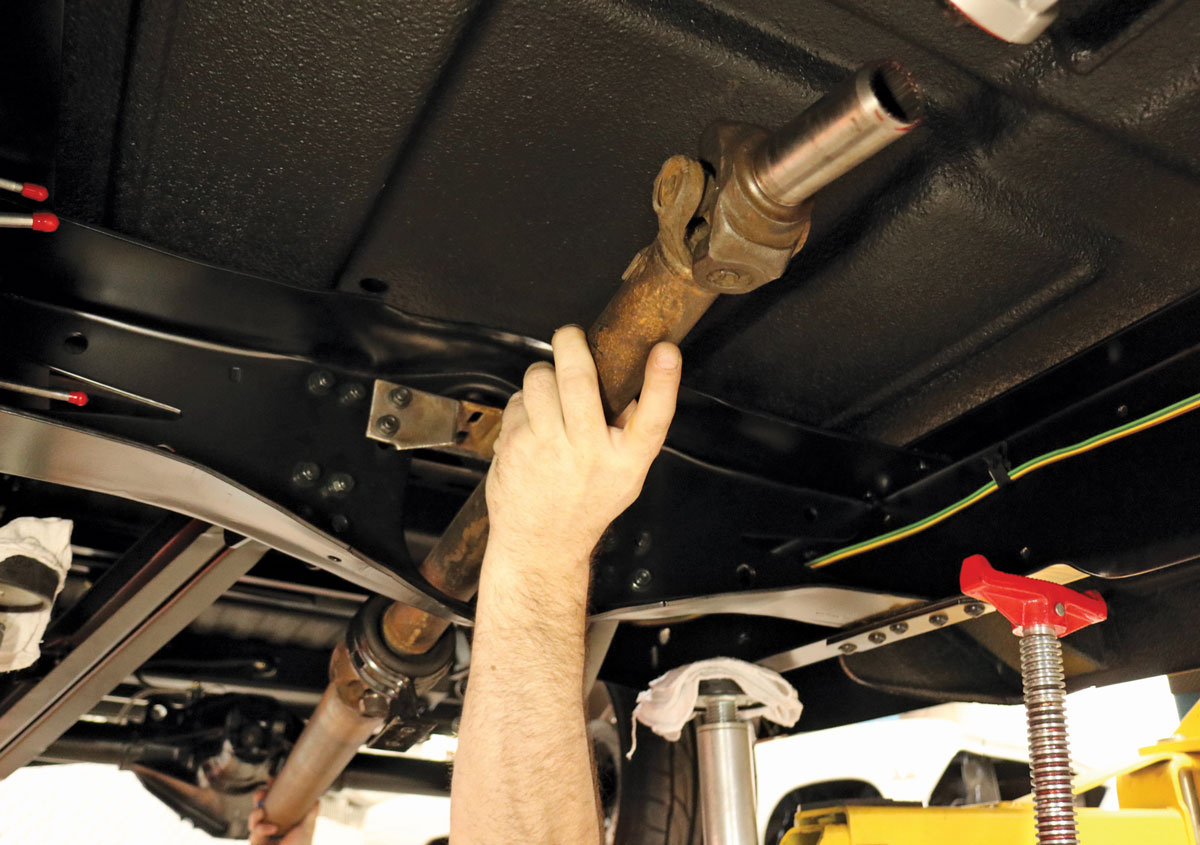

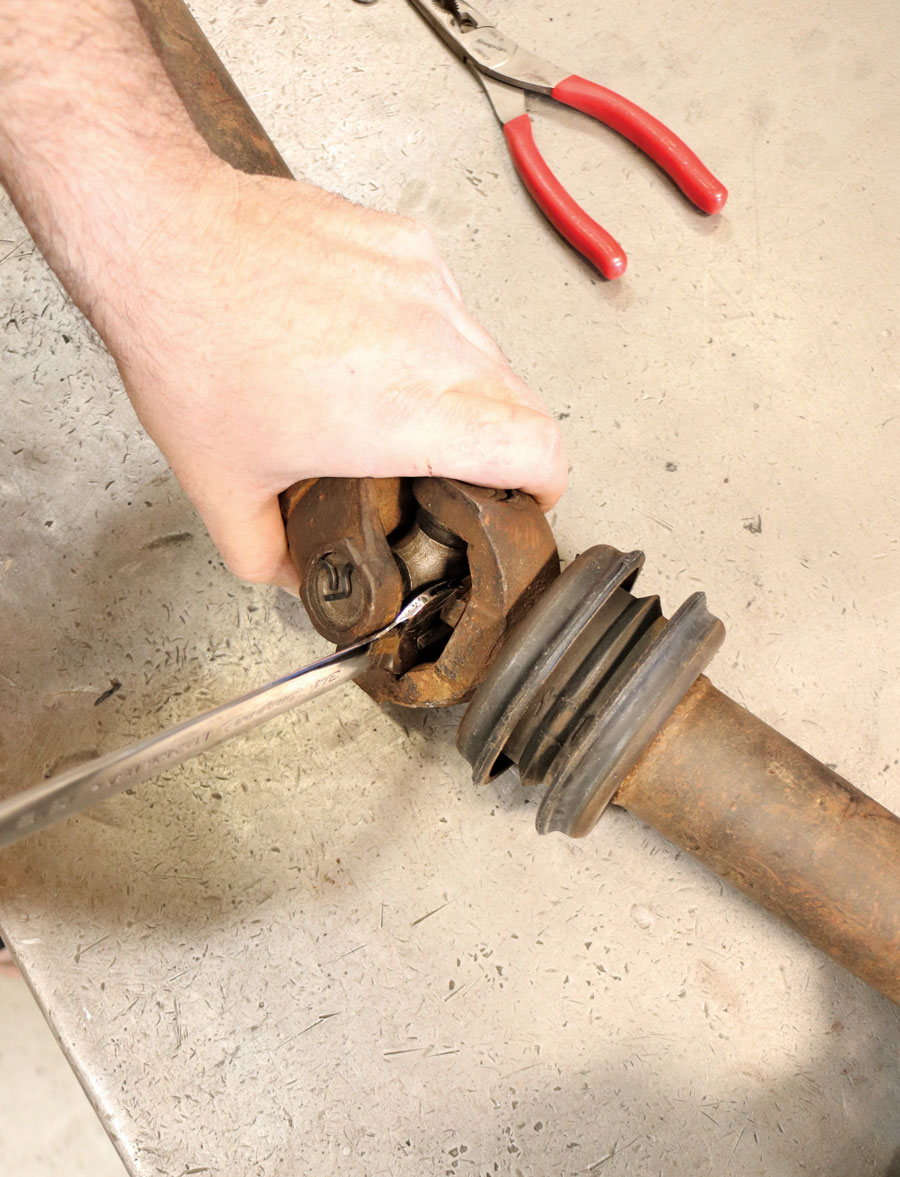
5. If necessary, changing the center universal joint is achieved by removing the four snaprings and disassembling the universal joint assembly in order to remove it from the two yokes.
6. It is sometimes necessary to partially disassemble the center U-joint in order to access the bolt that mates the two driveshaft halves. These two halves need to be split in order to replace the carrier bearing.
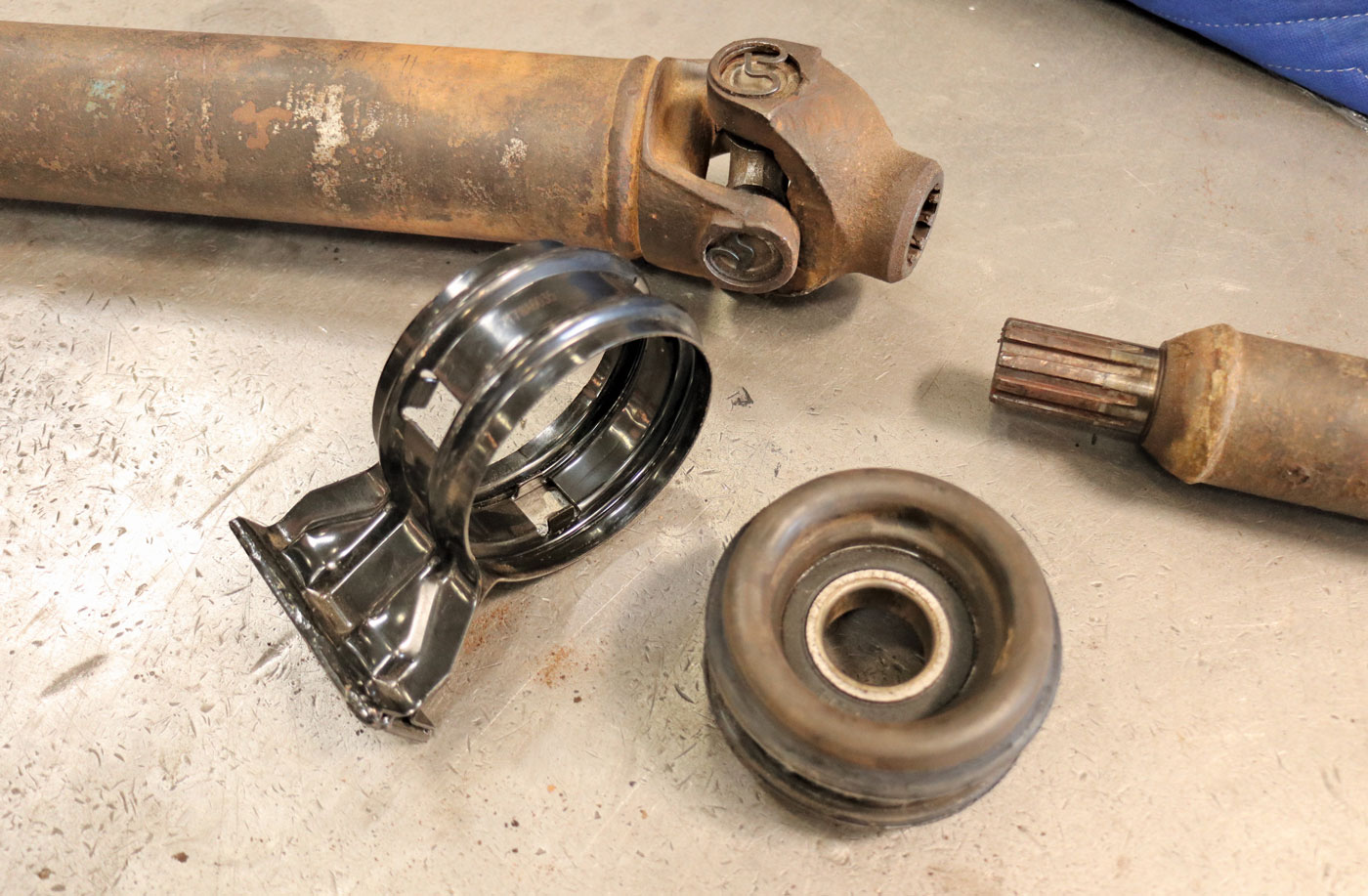
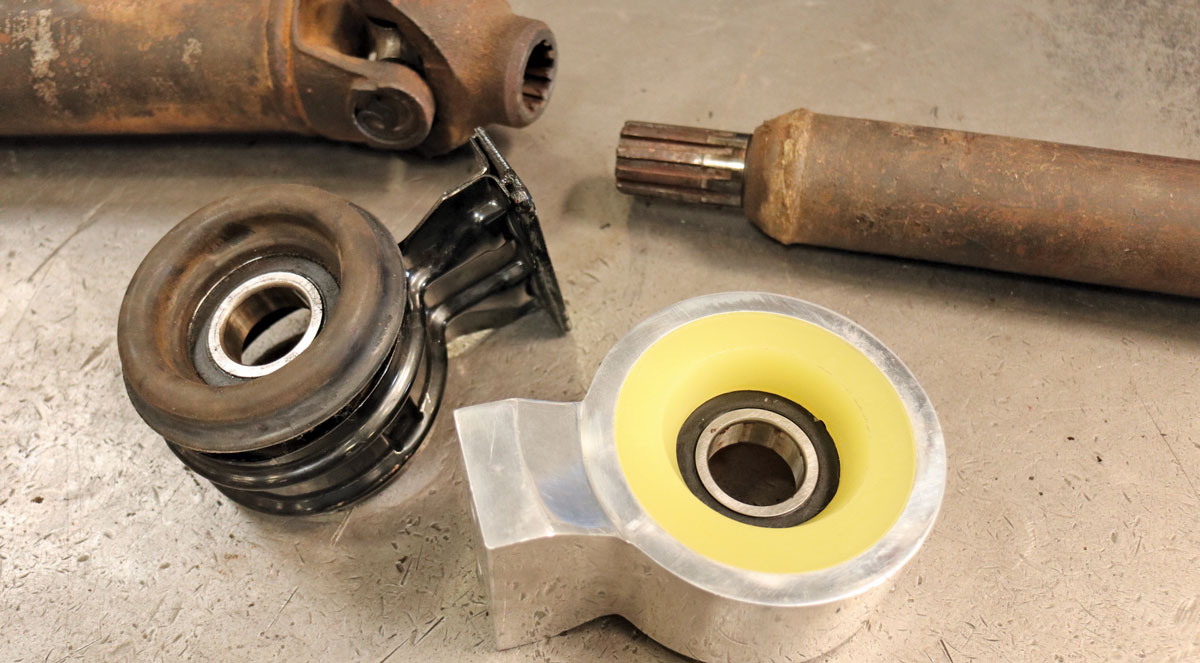
8. For comparison sakes, here’s an original-style rubber carrier bearing next to the CPP billet polyurethane unit we’ll be installing. The CPP unit’s design renders separation of the bearing from the housing nearly impossible, occurring in only the most extreme of circumstances, whereas the stock-style carrier bearing is easily separated.
9. Reassembly of the driveshaft with a new CPP carrier bearing goes opposite the disassembly. First the carrier bearing is installed on the splined portion of the front shaft before the two yokes are mated.
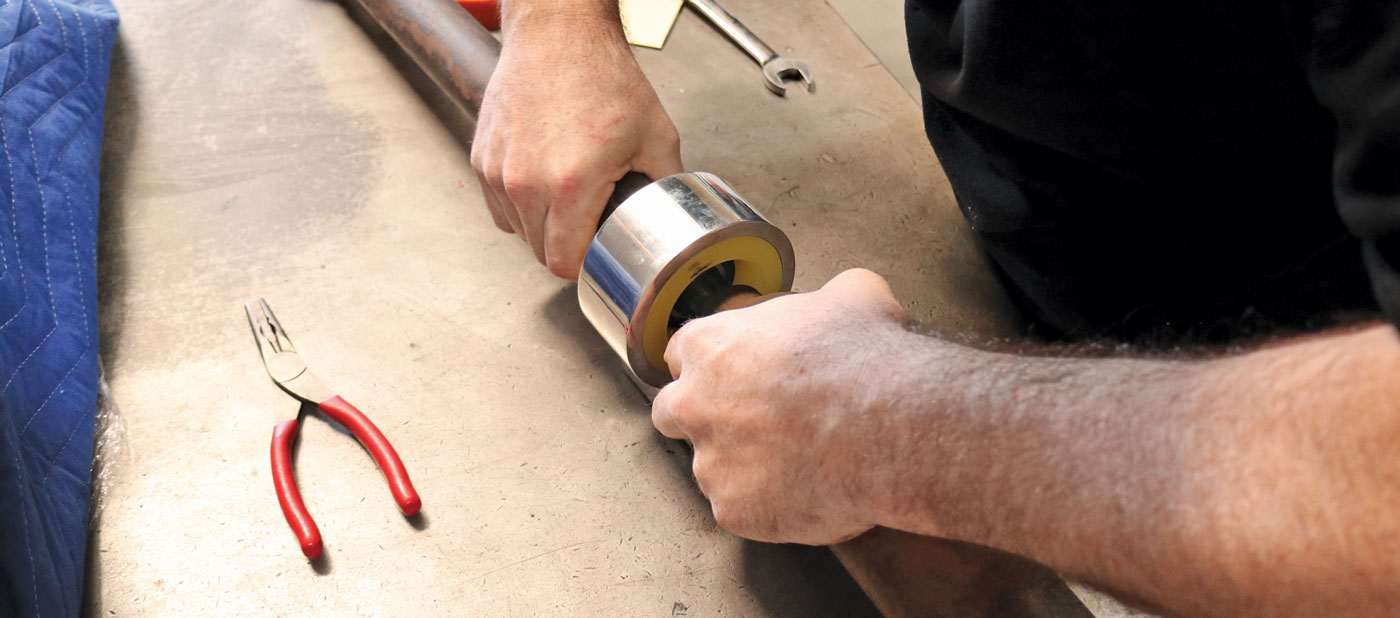
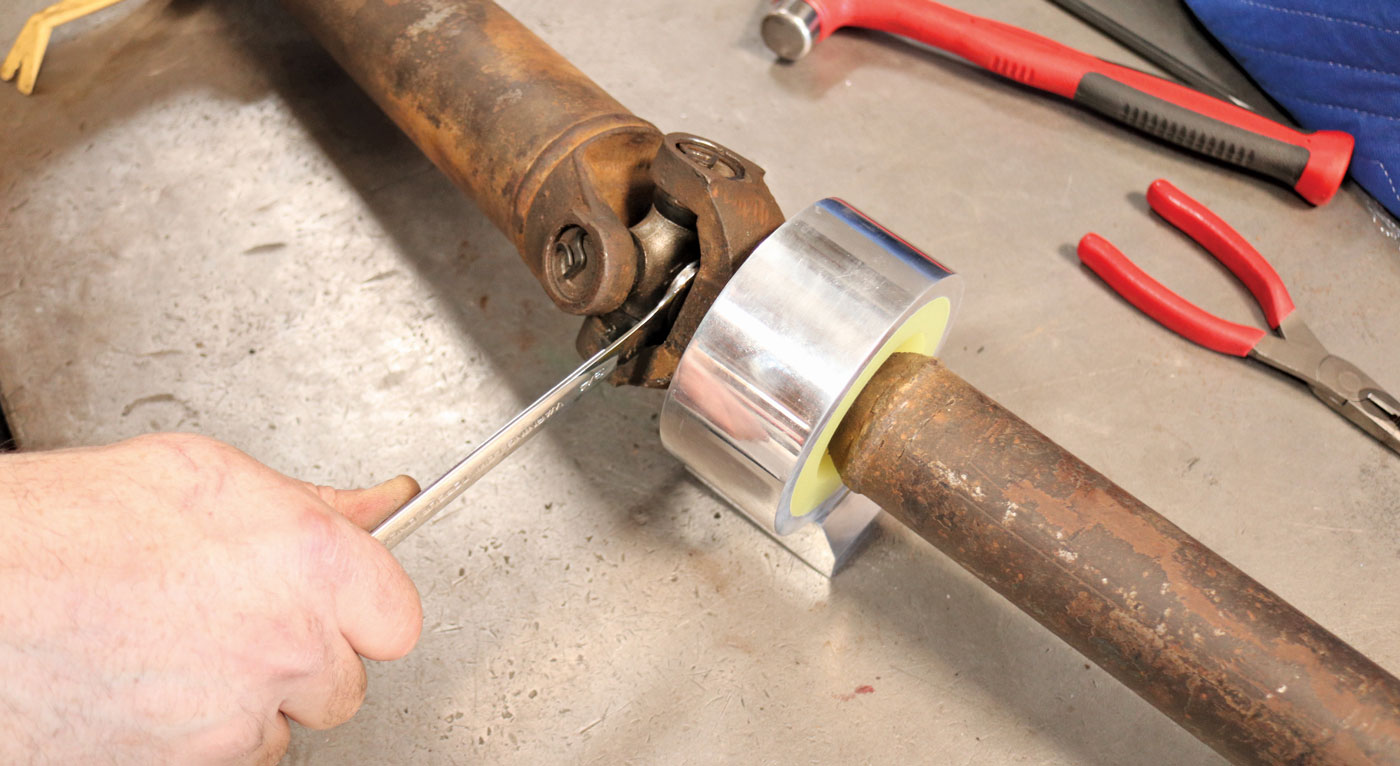
11. CPP’s billet carrier bearing is designed to bolt in place using the original mounting plate. They do, however, offer an upgraded, stronger mounting plate, if one so desires.
12. For the ultimate in driveline upgrades for your lowered C10, CPP recommends using their Slip Shaft Driveline in addition to the billet carrier bearing. The self-adjusting nature of the driveline reduces wear and tear on the carrier bearing, prolonging the life of all the driveline components.


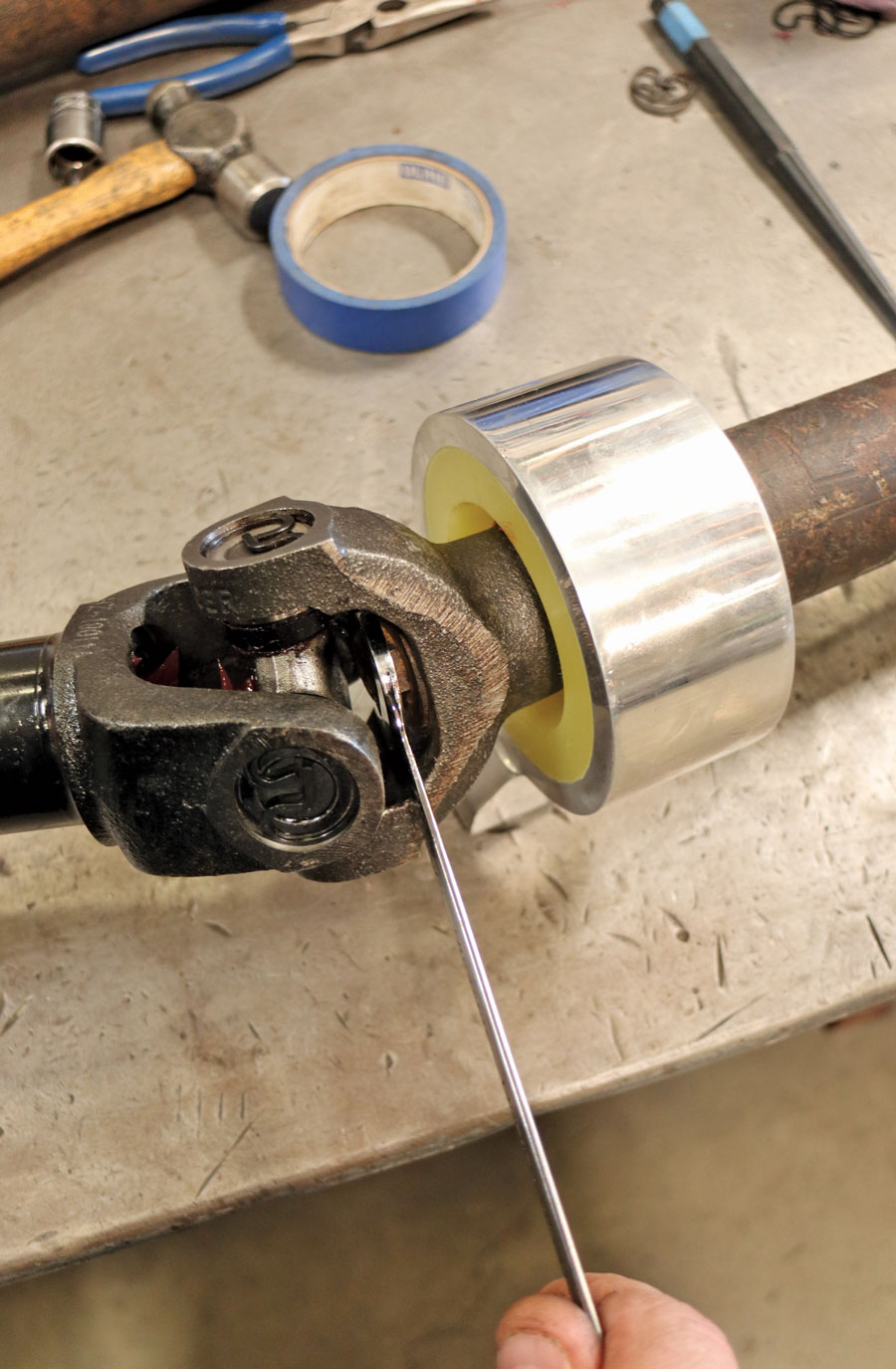
15. With the Slip Shaft Driveline installed, the amount of telescopic movement that’s possible is evident, ensuring that no matter how extreme the suspension travel, the front half of the driveline remains unaffected, as does the carrier bearing, returning reliability and longevity back to the driveline components, even on a slammed truck.
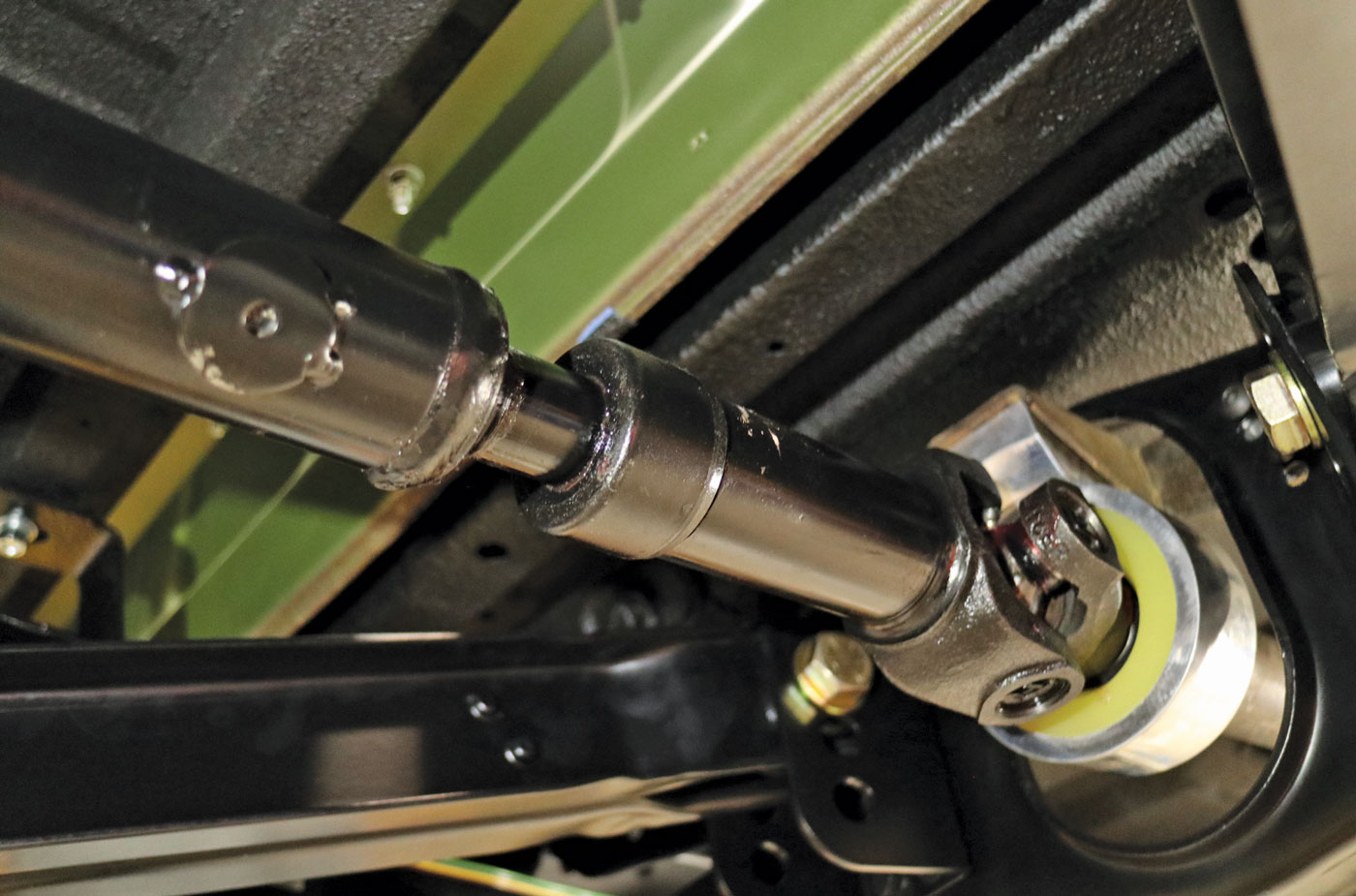
 SOURCEs
SOURCEs